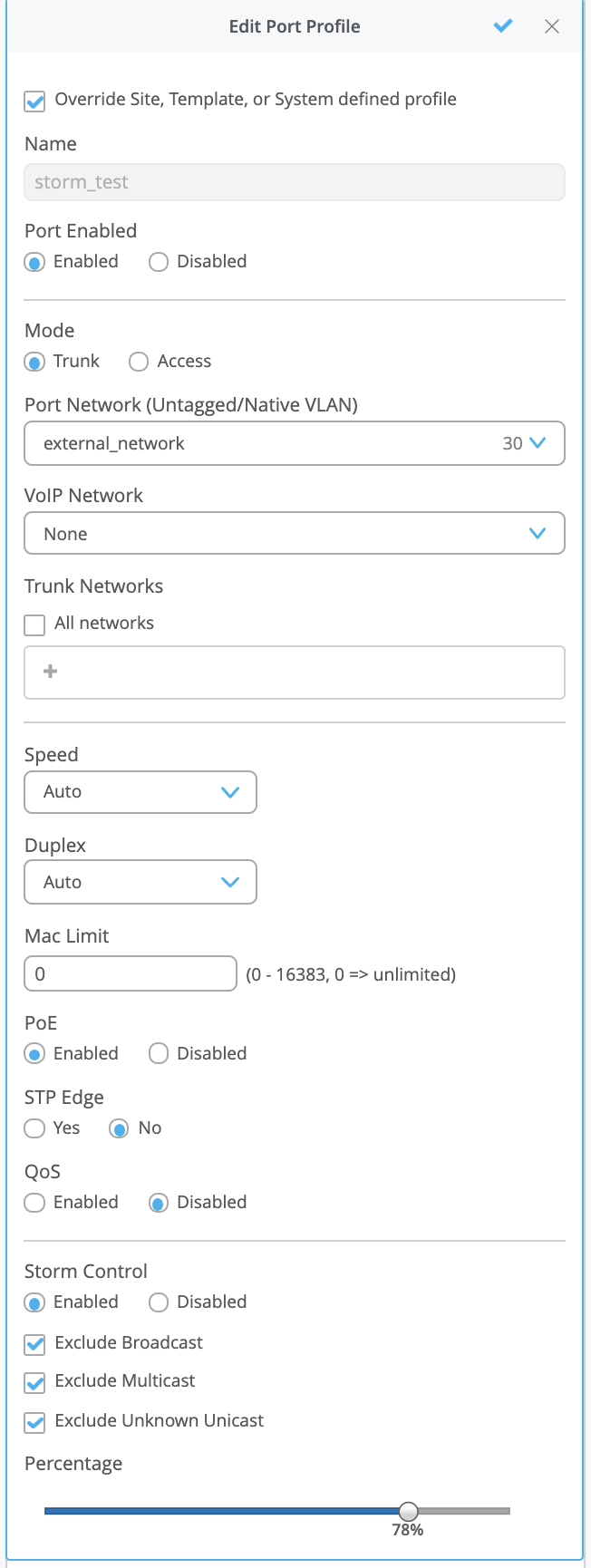What is storm-control & why enable it on Port Profile?
A traffic storm is generated when messages are broadcast on a network and each message prompts a receiving node to respond by broadcasting its own messages on the network. This, in turn, prompts further responses, creating a snowball effect. The LAN is suddenly flooded with packets, creating unnecessary traffic that leads to poor network performance or even a complete loss of network service. Storm control enables the switch to monitor traffic levels and to drop broadcast, multicast, and unknown unicast packets when a specified traffic level – called the storm control level – is exceeded, thus preventing packets from proliferating and degrading the LAN.
Storm control can be configured by using bandwidth percentage which configures as a percentage of the available bandwidth used by the combined applicable traffic streams that are subject to storm control on that interface. You can disable the storm control selectively for broadcast, multicast, or unknown unicast traffic, or any combination of traffic types.
Configuration on the Mist UI for Storm Control
- Create a Port Profile for the required network with storm control enabled
- Set the storm control level ( Percentage %. )
- Set options to Exclude Broadcast/Multicast/Unknown packets

Configuration on the Switch
set forwarding-options storm-control-profiles storm_test all bandwidth-percentage 78 set forwarding-options storm-control-profiles storm_test all no-broadcast set forwarding-options storm-control-profiles storm_test all no-multicast set forwarding-options storm-control-profiles storm_test all no-unknown-unicast


